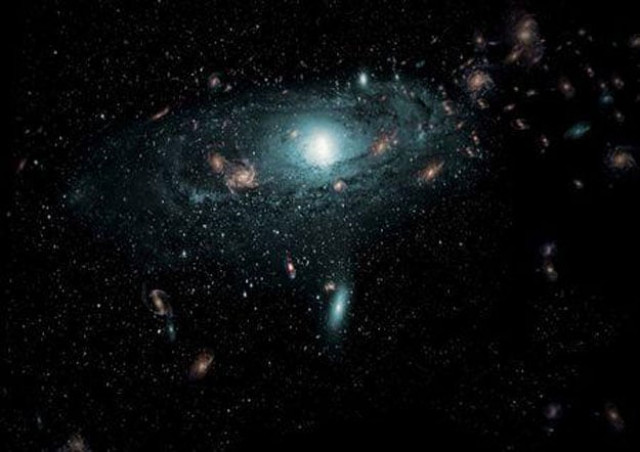Telescope used on Armstrong's moon landing finds new galaxies
Hundreds of new galaxies were discovered, using same telescope that was used to broadcast TV pictures from Apollo 11

An artist's impression of the galaxies found in the Zone of Avoidance behind the Milky Way is shown in this undated illustration provided to Reuters by the International Centre for Radio Astronomy Research February 24, 2016 PHOTO: REUTERS
Scientists at the Parkes telescope, 355 km (220 miles) west of Sydney, said they had detected 883 galaxies, a third of which had never been seen before. The findings were reported in the latest issue of Astronomical Journal under the title 'The Parkes HI Zone of Avoidance Survey'.
NASA reveals Apollo astronauts heard unexplained ‘music’ on far side of moon
"Hundreds of new galaxies were discovered, using the same telescope that was used to broadcast the TV pictures from Apollo 11," said Lister Staveley-Smith, a professor at the University of Western Australia's International Centre for Radio Astronomy Research.
 Astronaut Neil A. Armstrong, Apollo 11 commander, is pictured inside the Lunar Module (LM) while the LM rested on the lunar surface during the Apollo 11 mission in this July 20, 1969. PHOTO: REUTERS
Astronaut Neil A. Armstrong, Apollo 11 commander, is pictured inside the Lunar Module (LM) while the LM rested on the lunar surface during the Apollo 11 mission in this July 20, 1969. PHOTO: REUTERS"The electronic technology at the back end is substantially different and that is why we can still keep using these old telescopes," he said.
The discoveries occurred as the scientists were investigating the region's close proximity to the Great Attractor, a gravity anomaly in intergalactic space.
The Great Attractor appears to be drawing the Milky Way towards it with a gravitational force equivalent more than two million km per hour (1.24 million mph).
Using radio waves has allowed scientists to see beyond dust and stars in the Milky Way that had previously blocked the view of telescopes, the study showed.
Earth is different from 700 quintillion planets in the universe
Staveley-Smith, the lead author on the Astronomical Journal, said scientists have been trying to get to the bottom of the mysterious Great Attractor since major deviations from universal expansion were first discovered in the 1970s and 1980s.
"It’s a missing part of the jigsaw puzzle, which is the structure of our local universe," said Michael Burton, a professor at the University of New South Wales' Physics School.
"They have managed to pierce through it and complete the picture of what our part of the universe looks like."



















COMMENTS
Comments are moderated and generally will be posted if they are on-topic and not abusive.
For more information, please see our Comments FAQ